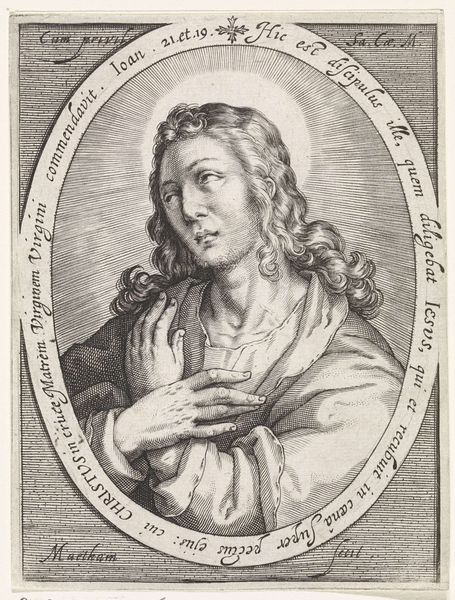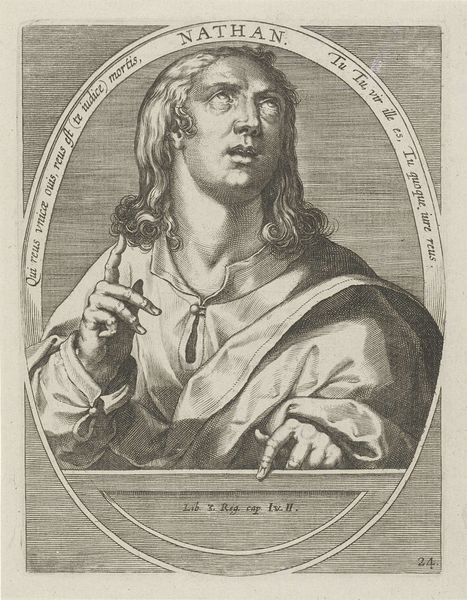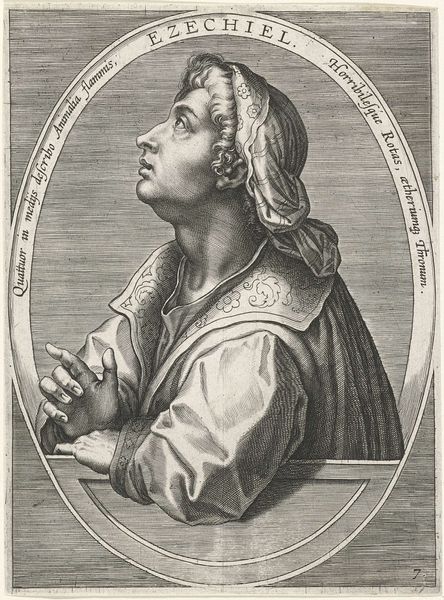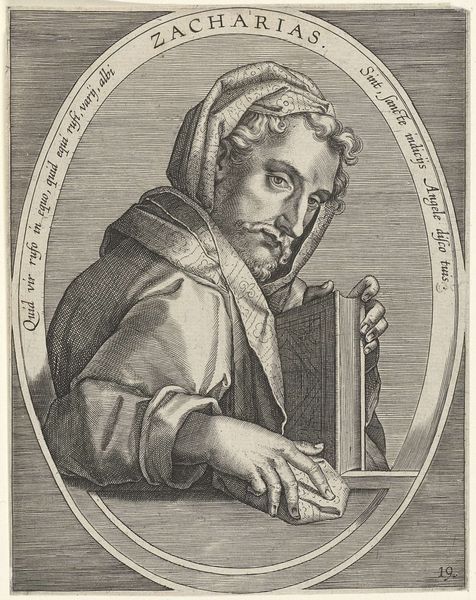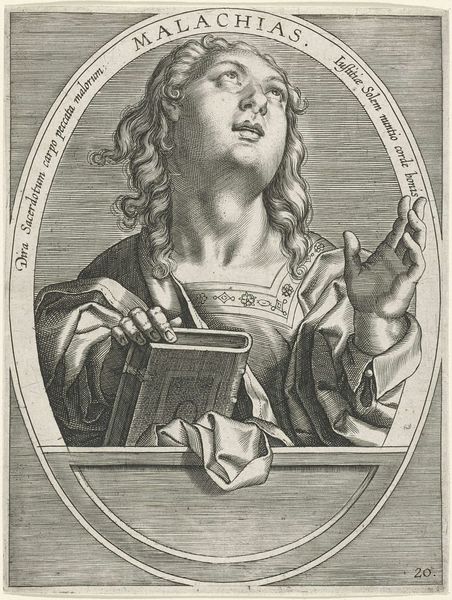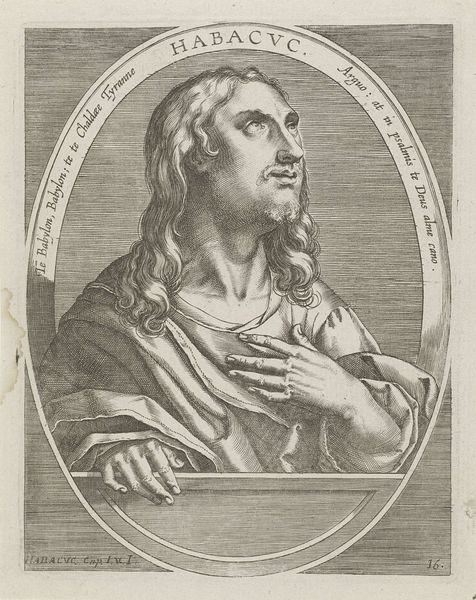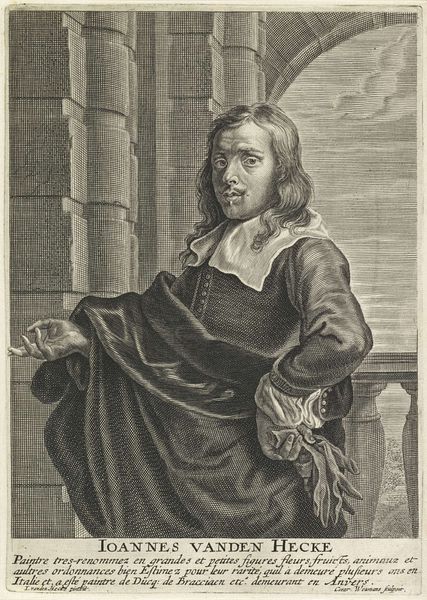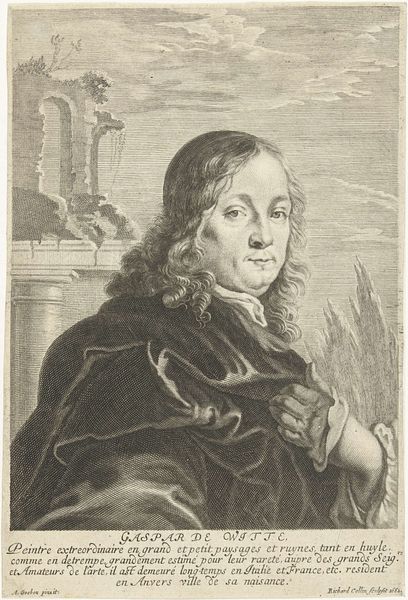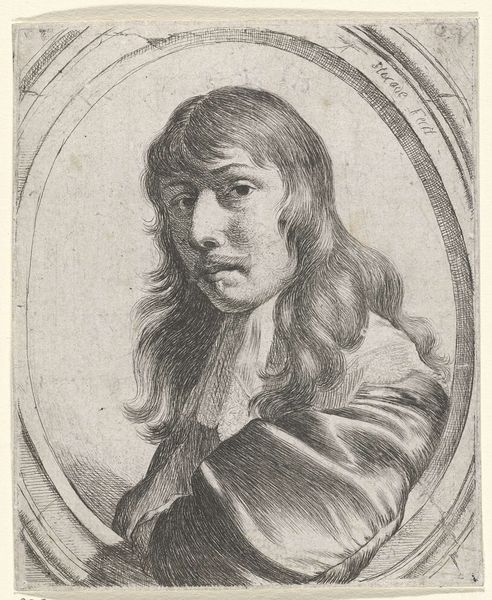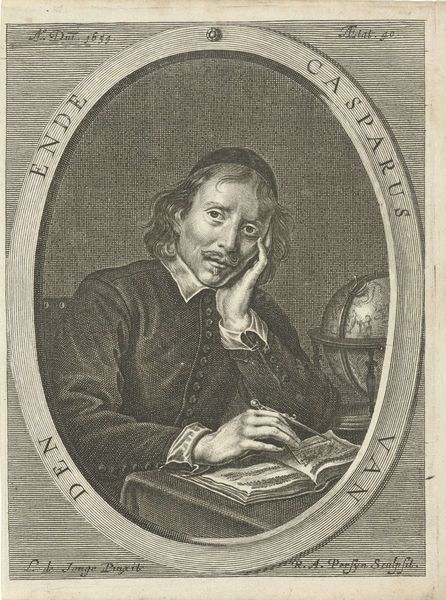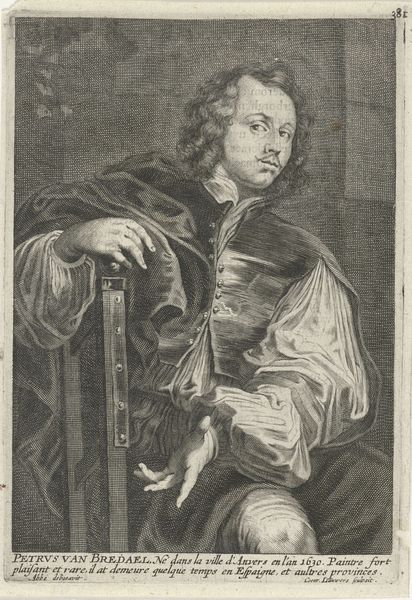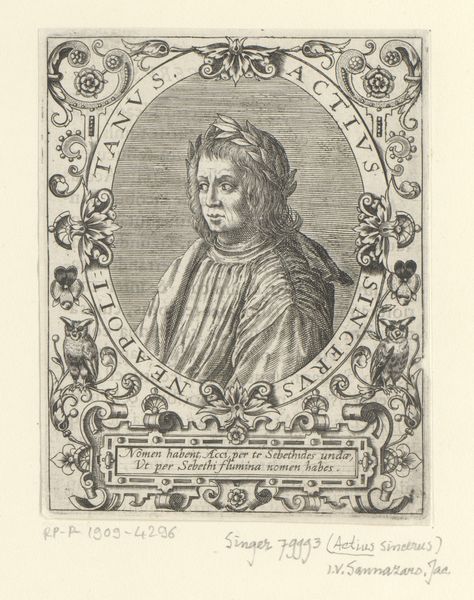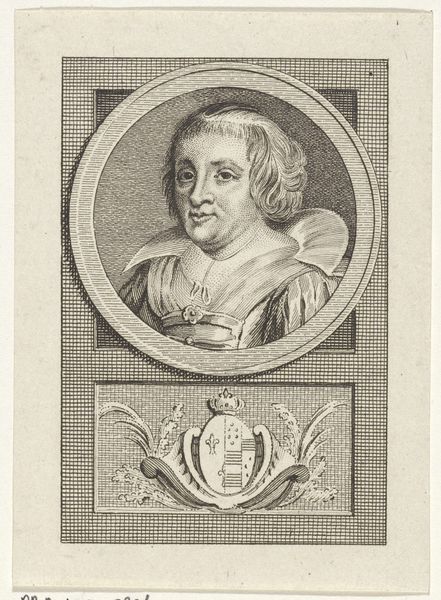
engraving
#
portrait
#
baroque
#
old engraving style
#
caricature
#
portrait reference
#
engraving
Dimensions: height 168 mm, width 130 mm
Copyright: Rijks Museum: Open Domain
This engraving of Hananja was produced by Cornelis Galle I in the Netherlands during the late 16th or early 17th century. Galle was part of a family of artists closely associated with the Plantin-Moretus publishing house in Antwerp. In this context, images served to disseminate ideas, and to align patrons with specific religious or political positions. The print presents Hananja, from the Old Testament, as a figure of authority through gesture and inscription. The Latin text indicates Hananja's reliance on God alone, which would resonate with the period's religious debates. The image is framed within an oval, a conventional choice for portraiture at the time. Galle’s work reflects the visual and intellectual culture of the Counter-Reformation, a period of intense religious and political debate in Europe. To fully understand such an image, we need to examine the networks of patronage, printmaking, and religious belief that shaped its creation and reception. Such research can illuminate the complex social life of images in the early modern period.
Comments
No comments
Be the first to comment and join the conversation on the ultimate creative platform.
